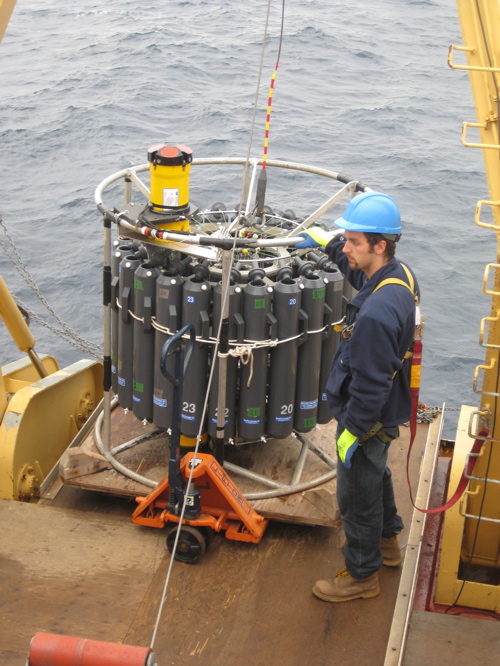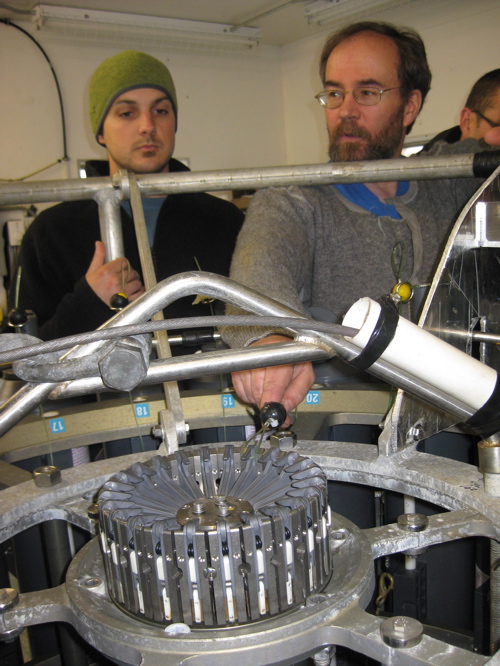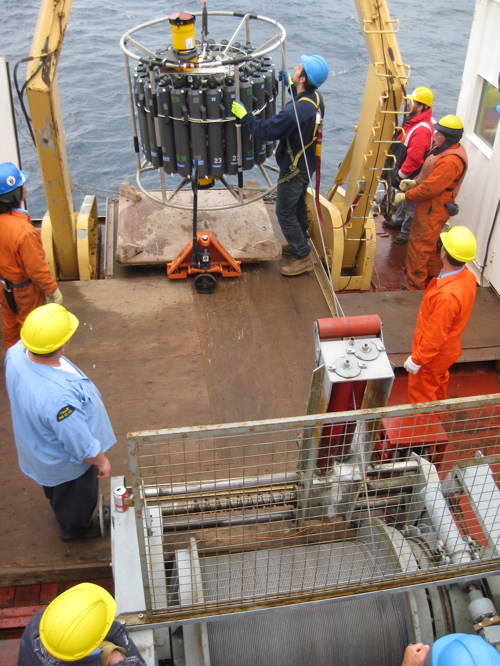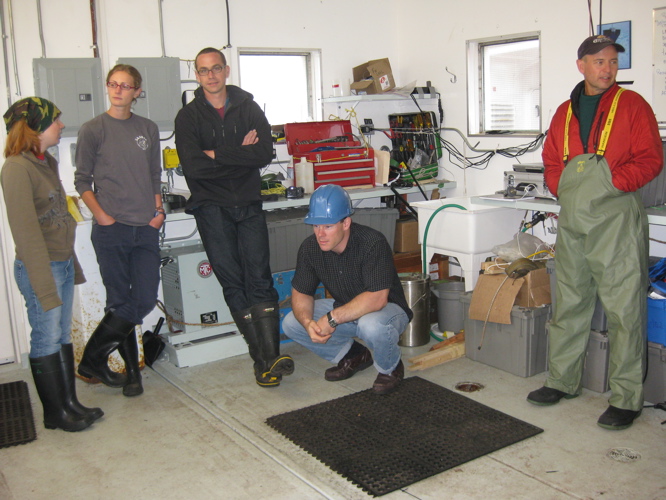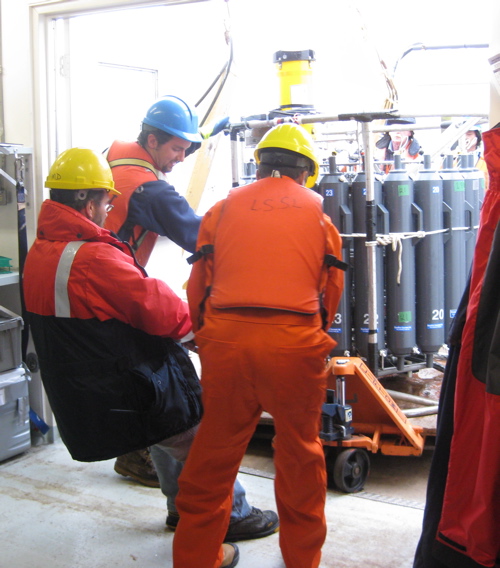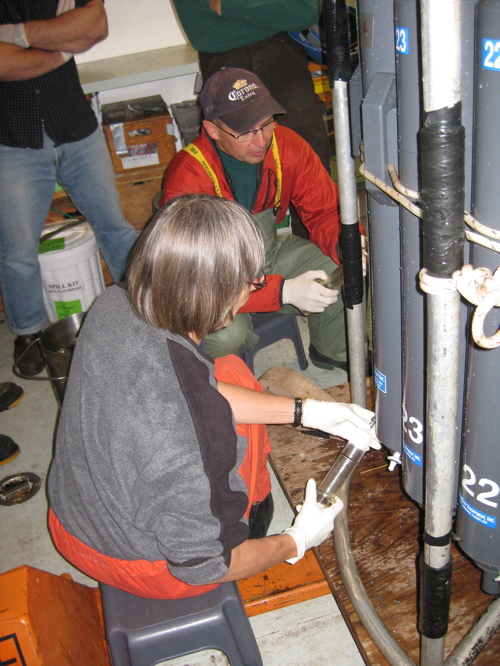Gerty WardJuly 21, 2008Extensive preparations have made to get here: grants written, technicians hired, literally tons equipment packed and sent, crew and ship logistics finalized, scientists traveled from home to here-- all to study the Arctic. How do they study the Arctic? What do these scientists look at, measure, compare and contrast, talk about, ponder in quiet moments? The methods used are way cool -- like no science I have ever seen. Today the CTD (Conductivity, Temperature and Depth) team conducted a practice Rosette cast. After all the effort to get here, it is important to get it right.
If you wanted to know about the water in a pond, you could go out in a boat to various locations in the pond and take samples, using, say, a cup and your arm. Up here the pond is the Arctic Ocean, our boat the Louis, the cup is the Rosette, and the arm is a winch. The Rosette is an ocean sampling device about the size of a VW Bug. It has all kinds of detection and collection devices on it-- one being the Niskin bottle, 24 of them. These bottles collect sea water at specific depths. Before being out in the water, each Niskin bottle is cocked, held open with a nylon wire. The Rosette can also measure water temperature and pressure, salinity and currents. The water in each Niskin bottle can be tested for dissolved gases, nutrients, sediments-- any factor that is of interest. The Rosette is so big and so heavy that it must be put in the water using a winch. Once in the water, it is lowered all the way down to a maximum depth. Then it is raised up slowly and, at specific intervals, each Niskin bottle is tripped closed via computer. In this way, water can be collected at different depths - giving scientists a "picture" of the Arctic ocean water column, from bottom to top.
Watch the video on my PolarTREC site to see a Rosette deployment. (Note that this footage was shot at the next Rosette deployment, at 1AM CDT. Check out the light conditions!) As the Rosette gets close to the surface, scientists gather ready to draw samples. Some samples must be drawn right away because many of the elements in the water are very susceptible to contamination. The Rosette is carefully maneuvered into the shack and the sampling begins!
After all samples are drawn, the Rosette is cleaned and checked and ready to go back in. The run-through has gone well and everyone is ready for the real thing. We will reach our first sampling station at about midnight tonight. Then, the Rosette will take a sample in another part of the ocean, and then another, and another again. At the end of the cruise, scientists will have sort of a "3-D picture" of the Beaufort Sea. They can compare and contrast the amount of specific elements at different places and at different times. From these data, they can begin to understand how this most beautiful part of the world is changing. How do you think the Rosette got its name? All photos by PolarTREC teacher Gerty Ward unless indicated. Last updated: October 7, 2019 | |||||||||||||||||||||||||||||
Copyright ©2007 Woods Hole Oceanographic Institution, All Rights Reserved, Privacy Policy. | |||||||||||||||||||||||||||||


